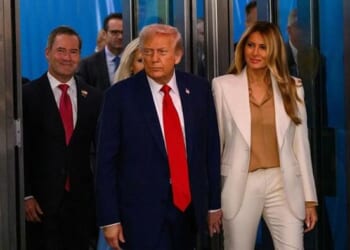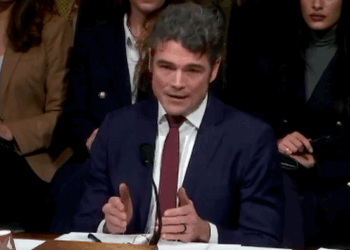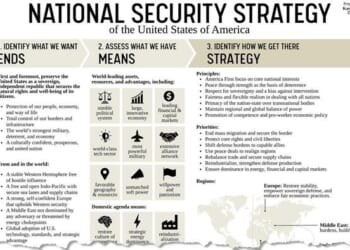As Washington debates how to deter China, one fact rings true: without India, any U.S. deterrence strategy is incomplete. The rise of the New Right has brought Realism into sharper focus in U.S. foreign policy. It rejects illusions about global democracy promotion, endless wars, or the magic of globalization. Instead, it embraces nationalism, focuses on hard power, and is serious about rebuilding America’s industrial base and technological edge. Every aspect of that worldview makes India more, not less, important.
The current Under Secretary of War for Policy, Elbridge Colby, was lead author of the 2018 National Defense Strategy during President Trump’s first term. That document was clear in its ambition: America must concentrate on Asia and deny China hegemony, while leaning on allies to shoulder more of the load. Colby has described India as the type of ally the U.S. “needs more of” because it is an “independent and autonomous partner.”
Now in President Trump’s second term, Vice President JD Vance has argued the U.S. must rebuild its industrial base and end critical dependencies on adversaries. In a Michigan speech earlier this year, he put it plainly: “If we do not protect our nation’s manufacturers, we lose a fundamental part of who we are as a people. Making things, building things, working with our hands is America’s heritage…”
Under President Trump’s guidance, Colby and Vance have sketched a worldview of the New Right that stresses building resilience at home and practicing Realism abroad.
>>> Balance of Power in Asia Depends on U.S.-India Cooperation
President Trump’s first term elevated the Indo-Pacific, advanced defense ties with India, and put confronting China at the center of U.S. national security strategy. His return now gives the New Right an opportunity to say America is not quitting the world—it’s economizing some of its commitments outside of Asia. Behind this shift is a recognition that China is no longer just a competitor, but a capable peer bent on displacing the United States.
In that challenge, arguably no country matters more than India. A denial strategy in Asia collapses without it. Geography puts India up against China on land and astride China’s critical sea lines of communication in the Indian Ocean. Size and scale give India, now the most populous country in the world, weight no ally can match. Political will has already been tested in real clashes with the People’s Liberation Army (PLA).
India has also led internationally through decisive action. In 2020 it banned 59 Chinese apps, including TikTok and WeChat, and has since expanded the list to cover more than 300. It tightened foreign investment rules to screen, and in some cases block Chinese capital, especially in sensitive sectors. State-owned firms were instructed by the Indian government not to use Chinese telecom gear, effectively excluding Huawei and ZTE from India’s networks.
On the border, India has confronted the PLA directly. From the Galwan clash of 2020, to subsequent standoffs, while accelerating road, tunnel, and airfield projects along the disputed border. At sea, Malabar exercises with the U.S., Japan, and Australia now integrate anti-submarine warfare, maritime domain awareness, and cross-domain coordination. Just this year, India deployed warships and conducted its first joint naval exercises with the Philippines in the disputed South China Sea, signaling that its maritime reach is extending into China’s backyard. India’s intent is proven in acting earlier and bolder than most democracies in reducing exposure to China.
This convergence is not only about China. India’s push for Atmanirbhar Bharat (“Self-Reliant India”) echoes the Trump administration’s turn toward industrial policy and secure supply chains. Vice President Vance’s call to protect and revive U.S. manufacturing reflects the same instinct. Both capitals are skeptical of multilateral abstractions and prefer arrangements built on sovereign interest.
This is not to say Delhi and Washington agree on everything. Far from it. India will never be comfortable with America’s ongoing defense ties with Pakistan, and will never accept junior partner status to the U.S. For its part, the U.S. is uncomfortable with India’s relationship with Russia as Washington tries to end the war in Ukraine and deter aggression against its NATO allies. The U.S. will also continue to push for India to lower trade barriers. But compared to the old Washington habits of democracy, promotion, and globalism, the New Right’s realism sits much closer to India’s own strategic culture.
India has historically worked more easily with Republican administrations and President Trump’s first term was a high point, with the Indo-Pacific strategy, stronger defense ties, and leader-level political visibility. The second term has opened more unevenly. Delhi has been unsettled by the way the White House has rolled out the red carpet for Pakistan’s army chief. But it’s likely that outreach reflects the peculiarities of the moment, not a larger rethinking of U.S. policy. It’s noise, not strategy.
There are bigger changes afoot in Washington. New actors are in town, and a new ideology is shaping the debate. Conservative influencers, business leaders, and cultural outsiders now carry more influence than much of the “old guard.” They are more narrowly focused on the threat of China, promoting growth, and defending America’s borders and sovereignty. President Trump is also willing to upend old orthodoxies.
The rise of the New Right can be a tailwind for India. It is producing a U.S. foreign policy that appears closer to India’s natural instincts than the liberal internationalism of the past. And the New Right’s view of U.S. foreign policy seems to put a premium on what India can deliver.
Europe is too weak, distant, and distracted to balance China. South Korea is too preoccupied with the North. Southeast Asia will never align. Pakistan cannot be trusted. Japan, Australia, and the Philippines cannot stand alone. Only India brings scale, position, and experience of Chinese aggression and hegemony. That makes it indispensable.
Not because it is an ally, but because without its weight, denial strategies collapse into theory. With India, balance and deterrence can become reality.













